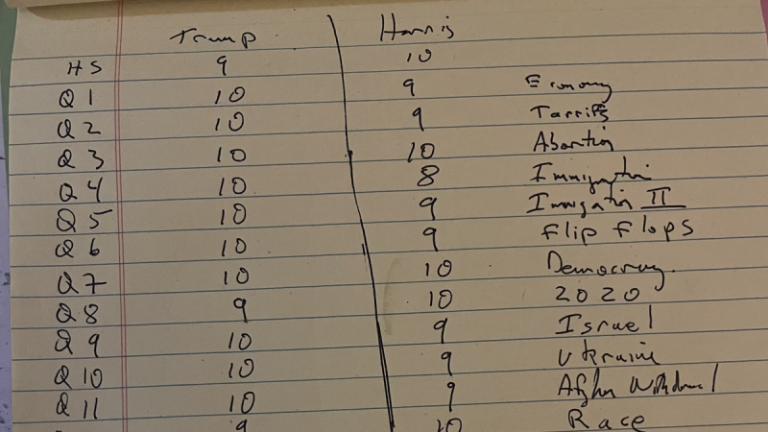Live coverage begins today at 8 p.m. ET for the .
The first rule of deciding who won a major political debate is that nobody wins a major political debate. There is no final score as the buzzer sounds, no final wink to be tiddled, it is a purely subjective matter. And that will be true of the vice-presidential debate between Republican nominee JD Vance and Democratic nominee Tim Walz.
That having been said, I’ve recently adopted a method of scoring debates from the world of pugilistics, that I think actually gives a pretty decent assessment of what most American voters see.
My advice in picking a winner is to borrow the scoring system of a boxing match. The basic rules are relatively simple. In each round the boxer who wins the 3 minutes gets 10 points, the loser gets 9, unless there is a knockdown or it is overwhelming, in which case the round is scored 10-8. A tie is 10-10.
Obviously, a knockout ends the fight.
I first tried this approach last month with the Trump vs. Harris debate. And I wound up with Trump winning 157 to 150. It wasn’t the only reason I thought and wrote that night that Trump won the debate, despite overwhelming media insistence that girl boss Kamala had kicked ass. But it was part of it.
And with polling showing no significant bump for Harris since their face-off and the fact that we’ve even seen some Trump swing state surge since their debate, my ostentatious declaration of a Trump victory looks a little less crazy today.
The legacy news media, who wanted any excuse to hand Harris a W anyway, viewed the tête-à-tête as a kind of Lifetime movie in which Harris had finally spoken truth to power, but I find in most of America that narrative doesn’t have a whole lot of purchase. The voters want answers.
That’s where boxing scoring comes in. If openings, closings, and each question, are the ’rounds’ of the debate, you wind up with about 15. See what I’m saying? The incremental 10-9 or 10-8 scores of each, mirror the nuance of how swayable voters watch the event.
The basic philosophy behind boxing scoring is that the primary job is to survive the round, so if you manage that, you get an automatic 8 points, winning the round, and can only bump that up by at most 2.
One could argue there is a fundamental unfairness here, that if I am 40 percent better at landing punches in a round than my opponent, I only get a 10 percent point advantage in scoring, but that is also the beauty of the system. Fights aren’t just about math.
This actually tracks very well with how political debates work.
The audience, which is to say the voters, do tend to see each question or issue as one round, and if Walz can get a 10-8 on abortion, or Vance can on the border, that goes a long way towards the kind of 7 point win I gave Trump over Harris.
Another way to think of this is that 90 percent of Americans likely already know who they are voting for, only 10 percent can be swayed, and boxing’s unique scoring system almost perfectly corresponds to this.
Eighty to 90 percent we are just scoring as a wash.
There is, of course, the chance of a knockout, but these days, that chance seems remote. Back when Reagan said ‘There you go again,’ or Obama, in retrospect wrongly, told Romney the 1980s wanted their foreign policy back over fears regarding Russia, the possibility of something near consensus on the question existed.
Those days are no longer with us, if they aren’t over forever.
Nobody really wins a debate, but we can still score them, we can still pay close attention to who is and isn’t actually answering the questions, and that has a lot of value.
So give a shot, grab a pad and paper, if you still have those, and just jot down your score for each question, 10-10, 10-9 or 10-8. Like a Ouija board your political leanings might push the pen a bit, but even so, you might be surprised by the results.
As Mike Tyson once put it, everyone has a plan until they get punched in the face. Let’s keep a close eye on the flying rhetorical hands of Tim Walz and JD Vance.



